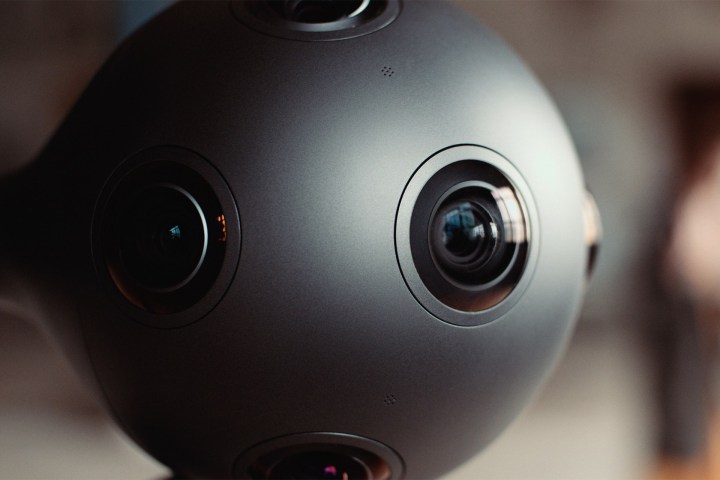
Nokia launched its professional OZO VR camera here in the States back in November 2015 with a crazy expensive $60,000 price tag. The high-dollar device is capable of spherical and stereoscopic video capture, with a spatial audio array thanks to eight built-in, synchronized 2,000 x 2,000 sensors. The video sensors feature a progressive scan with global stutter, and the lenses have an angle view of 195 degrees each. The camera’s minimum imaging distance is 20 feet.
If you’re into photography, this camera has a base sensitivity of ISO 400, a relative aperture of f/2.4, and a base color temperature of 5,000 degrees Kelvin. The solid state audio sensor is omni-directional, providing a full 360-degree soundtrack. The camera also utilizes a 500GB solid state drive to record media in a MOV format that contains 8-channel raw video and 8-channel PCM audio. The SSDs can record 45 minutes of this type of media locked at 30 frames per second.
The new camera can be controlled over a wireless network using a remote application for OS X 10.10 “Yosemite.” The device can even output VR video through an HDMI connection or a stereoscopic virtual reality renderer. It’s made out of milled aluminum alloy in a Lava Grey color, making it somewhat light at 9.3 pounds with the battery included. The camera head itself measures 10.4-by-6.7-by-6.3 inches, while the combined head and mount assembly measures 10.4-by-6.7-by-9.4-inches.
For $60,000, content makers receive the camera itself, a digital cartridge, a camera mount, a docking station, and a power supply, all of which comes in a rugged shipping case. Accessories include a $5,000 OZO digital cartridge bundle, a $1,500 OZO docking station (DS-01), and a $2,500 OZO media module. Nokia says the camera can “dramatically” reduce the time, cost, and complexity typically associated with the post-production process.
“Virtual Reality represents a new frontier in storytelling, and we’re thrilled to be bringing this VR technology to the team at Disney,” said Ramzi Haidamus, President at Nokia Technologies. “OZO will help Disney bring their film properties to life in new ways through immersive entertainment experiences, and our focus will be on helping them get the most out of VR as they begin to uncover all that it has to offer.”
Nokia introduced the OZO Pioneer Program in March to get the camera into the hands of content makers. Qualified participants will see $15,000 knocked off the price, and in return these “Pioneers” are required to provide one minute of footage within 90 days after the camera’s purchase. Pioneers must also take part in two feedback sessions to express their views on the device.
“We hope the Pioneer program will enable an even greater degree of experimentation and creative expression in a new medium that will radically transform the way people connect to stories, experiences, each other, and the world around them,” Nokia said.
The program is open for applications until April 30, 2016 (aka really soon).


